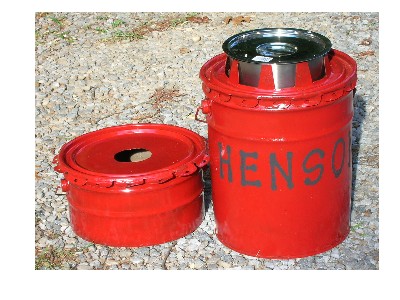The CRAB Stove (Henson Charcoal Rice And Bean Cooker)
Lanny Henson, October 21, 2006
The CRAB Stove a low cost metal charcoal stove by Lanny Henson.
CRAB Stove- The Henson Charcoal Rice And Bean Cooker cooks, serves and holds. It is efficient and saves up to 75% on fuel. It is inexpensive, easy to build and easy to use, just light it and forget it. Only 150 grams of charcoal cooks 5 kilograms of rice. That is about ¼ the UCB Water Boiling Test Benchmark of 600 grams for charcoal.
The CRAB Stove only needs 175 grams of charcoal cooks 5 liters of pintos for 2 hours, or boil and simmers 5 liters of water/stew.
It functions three ways, it cooks, it serves, it holds.
APPLICATIONS/USES:
A-I designed this low cost stove for people in developing areas where indoor air pollution, deforestation and fuel cost are problems. This design is practical for those that have access to UMC (used metal containers). See/search “Lanny Henson Stove Project” and Tom Miles' http://www.bioenergylists.org for more about our purpose.
B- The material cost is low enough to build “Pot Stoves” or dedicated stoves like rice cookers, bean cookers, tea pot stoves/water pasteurizes, how about a “A stove for every pot!”
C-This stove can also function as a camping, emergency, off grid and disaster stove. It can even be built after the loss of electricity with only hand tools.
D-Use this stove to “keep the heat out of the kitchen” with summertime outdoor cooking. Use is easy enough to make saving energy practical!
COST:
The cost is low being constructed from used metal containers (UMC). See photo below.
CONSTRUCTION:
It is simple to build with hand tools and no electricity, from 2 or 3 five-gallon metal pails/buckets and a few tin cans.
EASE OF USE:
It is easy to light and it cooks steadily without attention. Light it and forget it!
It cooks, serves, and holds.
Set it outdoors to cook and bring it in to serve and hold.
Cooks will like it and use it.
DURABILITY:
The burner is a 1.13 to 1.31-liter can. This can is the consumable part of the stove. It is a very common size. You can buy one full of food for a buck! There is very little heat stress to the rest of the stove.
BURNER:
The burner is top lit and uses my Center Fire technology. It works well because the fuel on the bottom and around the sides helps insulate and focuses the heat up to the pot. The center collapses as it burns to form a concave or parabolic shape. About ½ to 2/3 way through the burn the focus seems to be lost and the side of the stove starts to get warm/hot to the touch.
EMISSIONS and EFFICIENCY:
The emissions are low because it only uses 150 grams (1/3 lb) of charcoal. That is about ¼ the benchmark of 600 grams set by the UCB (University of California Berkley) Water Boiling Test. The exhaust volume is low and the exhaust temps stay below 185 degF. The BM pot does a very good job of absorbing heat.
PORTABILITY:
Its portability is handy, set it outdoors to cook, set it out of the rain, move it while cooking, take it to another location while holding hot temps, bring it in to serve, set it out of the way to hold or store.
THE POT:
The cook pot is a 6-liter Bain Marie (BM) pot, which in my opinion the most efficient and practical pot design for sunken pot applications. An 8qt stockpot will work but the BM pot is better. A 6 qt BM only cost $15 with lid. They are made of stainless which is more durable than aluminum. There is uniformity in size between manufacturers of BM pots so pots will fit stoves. Sunken pot stove designs are the most efficient but uniformaty of pot size has been a problem.
They are stackable so after one pot boils it can sit it on top of a second pot while it is being cooked or the top pot can pasteurize water while the bottom pot cooks. A pail with an open bottom makes shell to retain the heat of the top pot.
The BM pot is much more efficient that the “paint can pot” that I used before (see the Paint Can Stove).
The BM cooked 5L of beans and the paint can only cooked 3.5L with about the same amount of fuel.
One issue with the Bain Marie pot is that the upper flange functions as the handle. This flange works well for me as a handle but larger pots could be a problem. I use two small squares of corrugated cardboard to handle a pot when it is hot, but a full pot does not need that much handling since you serve right out of the stove and you leave the pot in the stove to retain heat.
The Bain Marie pot would be the best “World Pot” in my opinion. They are made in China and India.
You can check out the details at Instawares.com click on.
http://www.instawares.com/powersearch.asp?mySearchTerm=6+qt+bain+marie&site=&imageField.x=27&imageField.y=8
and if that does not work go to http://www.instawares.com/ and search for “6 qt bain marie” Crestware and Adcraft are about $15 with lid. (As of 10-2006)
I also found the 8-liter and 4 liter pots to be very useful.
TEST:
In the last test of the CRAB Stove I loaded 150 grams of charcoal and 10 gr of wood into the burner. I used a piece of bamboo temporarily to maintain an airway as I loaded the charcoal. The bamboo is removed before firing.
Then I installed the burner in the stove body and top lit it with a few drops of candle wax. After about 5 min I inserted the pot with water.
Then I installed the wind band and top cap to help contain the heat and stabilize the burn.
After 30 min the 3.33 liters of water was boiling so I added 1.67 kilograms of rice to equal 5 kilograms and about 5 liters of volume. You can add the rice at the beginning to “light it and forget it”.
It only took 9 min to return to a boil. Rice must have a low specific heat.
Then I pulled the sticks from underneath the stove reducing the combustion air and the heat to simmer. In 30 min the 5 kilograms of rice was done. (The cooked rice expanded to about 5.5 liters)
I left the rice undisturbed and it stayed above 140 degF (save temp) for about 4 hours.
The exhaust temps stayed below 185degF while cooking untill the end.
Micro Enterprise:
This design has potential for developing areas as well as developed areas.
In developing areas:
1. Those that have access to used metal containers (UMC) could use this design to start their own business, building cook stoves.
2. Someone that has access to a landfill, a scrap yard or construction site could start a salvage business by furnishing UMC to a stove builder.
Painters, roofers, commercial and institutional kitchens and auto shops have UMCs.
If used 5 gal pails are worth 2 to 3 bucks to a stove builder then buyers of products in pails may request metal instead of plastic pails.
3. People that have a source for new pails at a reasonable price can use these for their stove bodies.
For Western and developed markets:
4. Someone could build and sell camp and emergency stoves at flea markets and yard sales.
After thoughts/Fore thoughts:
This metal stove could be a starting point for designs that use other types of construction materials like ceramics, mud, or masonry/bricks.
The design principals could be applied to metal containers other than 5 gal pails.
The heat retaining part of the design affects the efficiency as much or more than the burner’s design.
I believe that if retained heat methods (like the “pot module”) were applied to other burner designs the efficiencies would increase significantly and possibly double.
Appeal for Support:
I am writing a “how to” book for the CRAB Stove and I need publishing advice and help.
If you think my work is worthy please help with funding!
I have several designs as good as the CRAB Stove that need attention but I have limited resources and I am running on fumes!
If you are interested I will send you a list. Pick one and I will develop it in you name. For example the Bill Gates Street Vendor Bread Oven by Lanny Henson.
I will also develop your concept if I think it is viable. Will design for food :-)
Up Coming:
The Pot Module “how to”.
The BRASS Stove.
Thanks for viewing, Lanny Henson, contact me at lannych at bellsouth dot net. and let me know what you think even.
Photos:
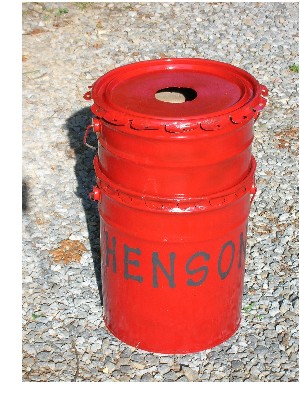 The CRAB Stove (Henson Charcoal Rice And Bean Cooker)
The CRAB Stove (Henson Charcoal Rice And Bean Cooker)The CRAB Stove (Henson Charcoal Rice And Bean Cooker)
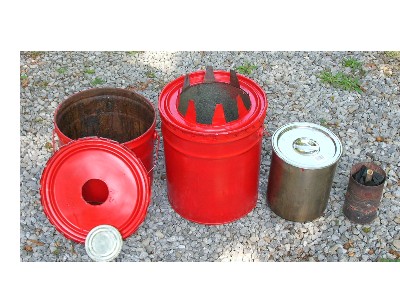
The stove parts are all made from used metal containers and I used a 6-liter Bain Marie pot.
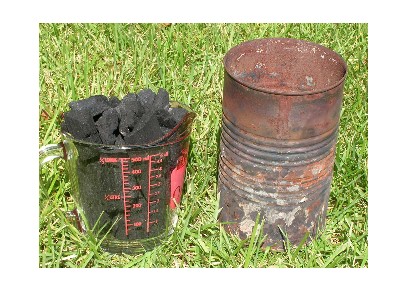
150 grams of charcoal in a ½ liter measure cup and a Center Fire Burner (4”dia and 6” tall). A piece of bamboo is used to maintain an airway as the charcoal is loaded into the burner. The bamboo is removed before firing.
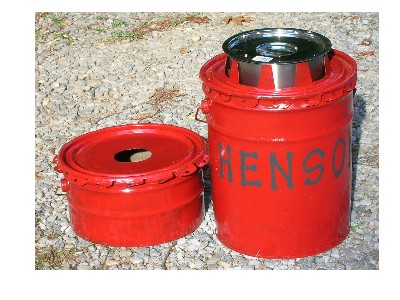
I loaded in 150 grams of charcoal and 10 gr of wood into the burner and installed the burner in the stove. The burner was top lit and after about 5 min I inserted a pot with water.
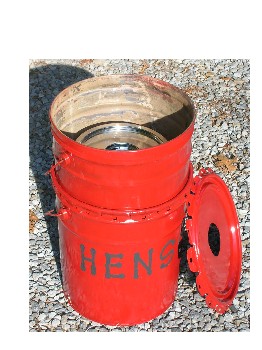
Then I installed the wind band

and the top lid to help contain the heat and stabilize the burn.
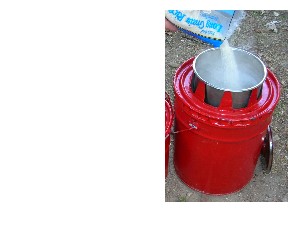
After 30 min the 3.33 liters of water was boiling so I added 1.67 kilograms of rice to equal 5 liters/kilograms.
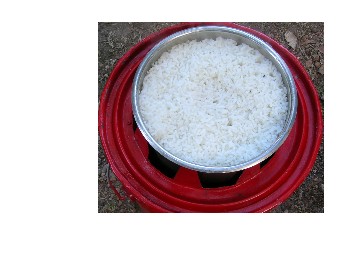
It only took 9 min to return to a boil. Then I pulled the sticks from underneath the stove, to reduce the combustion air and reduce the heat, to simmer the rice. In 30 min the 5 kilograms of rice was done.【正規品】最新のナイキ メンズ レディース スニーカー通販

